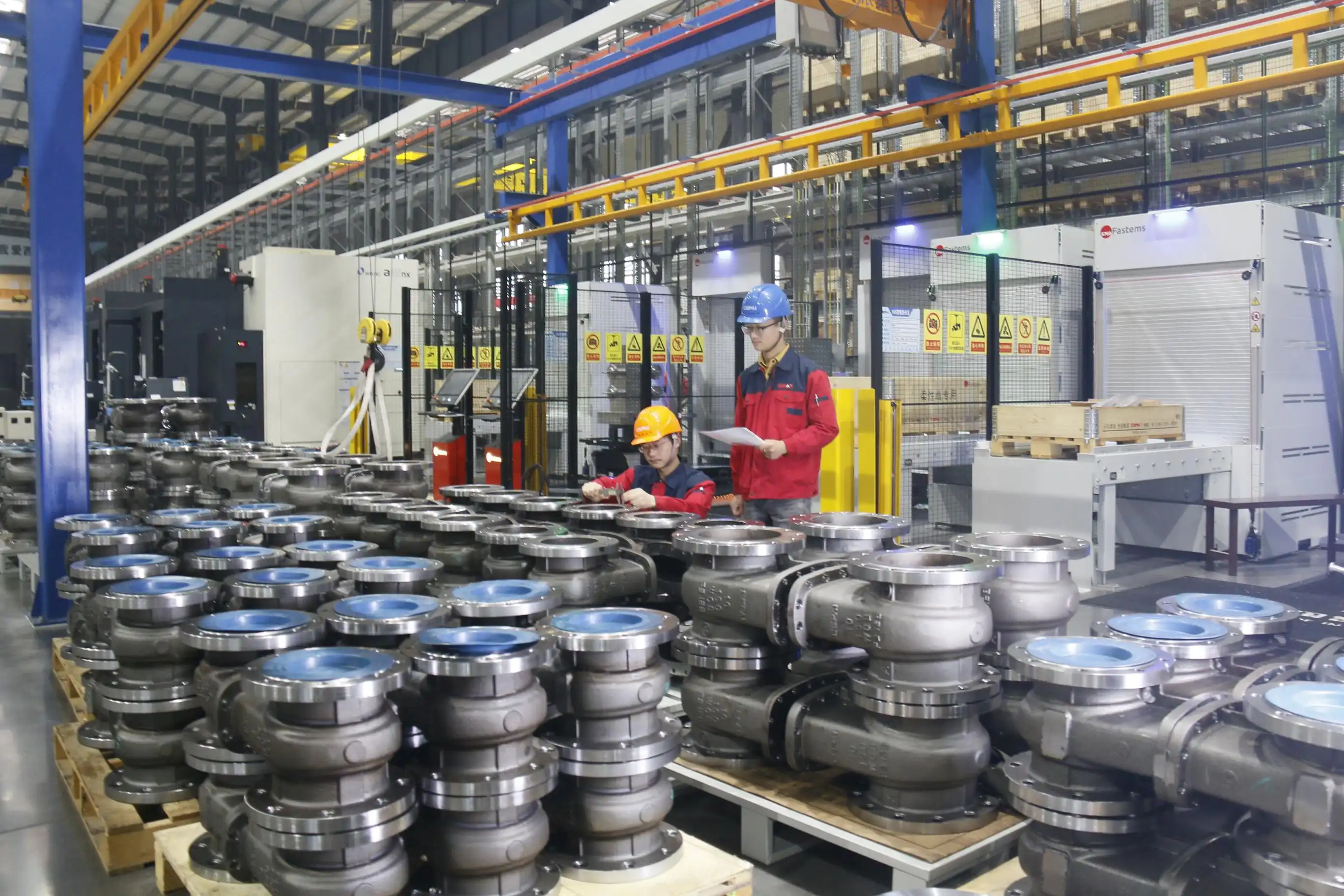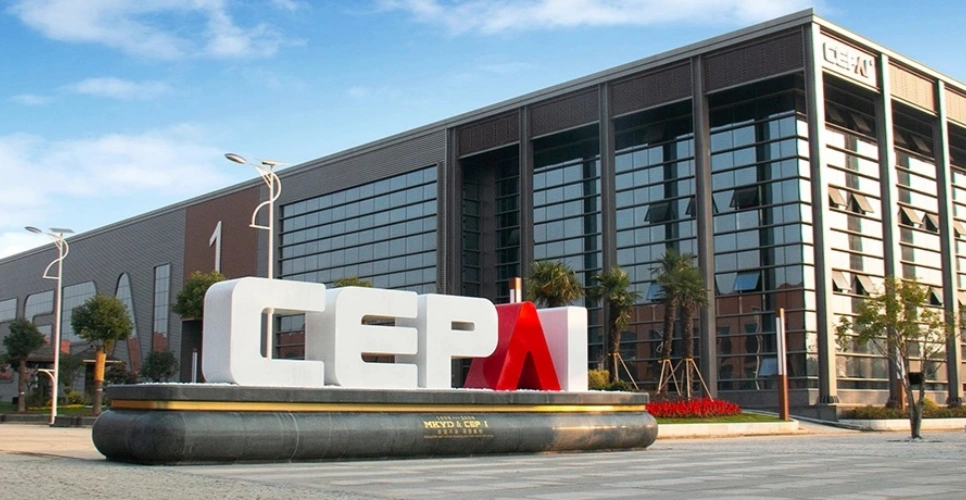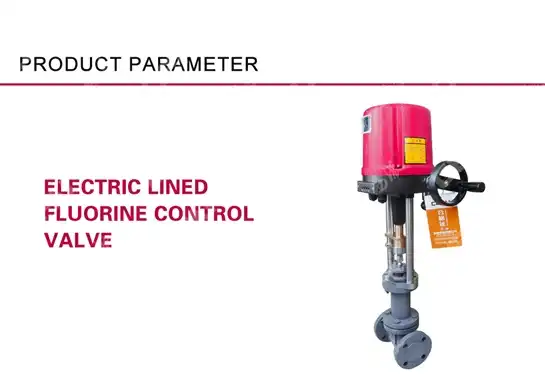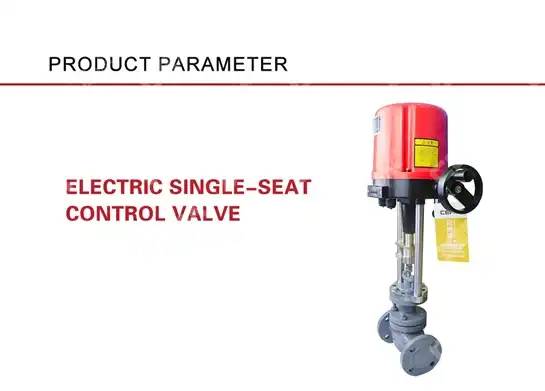Understanding Control Valve Flow Characteristics (Linear, Equal Percentage, Quick Opening)
Picture this scenario: your critical process suddenly becomes unstable, with erratic flow rates causing production delays and safety concerns. The root cause? An improperly selected control valve with unsuitable flow characteristics for your application. Understanding control valve flow characteristics is not just technical knowledge—it's the foundation of reliable process control that directly impacts your operational efficiency, product quality, and bottom line. This comprehensive guide will demystify linear, equal percentage, and quick opening characteristics, enabling you to make informed decisions that prevent costly process disruptions and optimize your system performance.
What Are Control Valve Flow Characteristics?
Control valve flow characteristics define the relationship between valve opening and flow rate through the valve under constant pressure conditions. These characteristics are fundamental to achieving precise flow control and maintaining process stability in industrial applications. The inherent flow characteristic describes how flow capacity changes with valve stroke under idealized conditions of constant pressure drop across the valve. The three primary flow characteristics—linear, equal percentage, and quick opening—each serve specific applications based on system requirements and process dynamics. Linear plugs are used on those systems where the valve pressure drop is a major portion of the total system pressure drop, while equal percentage characteristics provide excellent control stability across wide operating ranges. Quick opening valves excel in applications requiring rapid response to control signals. Modern control valve design incorporates sophisticated trim configurations to achieve these characteristics precisely. For instance, CEPAI's electric control valves feature pressure balance spools with both equal percentage and linear adjustment characteristics, manufactured from high-grade materials including 304, 316, and 316L stainless steel. The company's advanced manufacturing capabilities ensure consistent flow characteristics across their DN15-400mm nominal diameter range, with nominal pressures from PN16 to PN64 and ANSI 150 to 600 ratings. Understanding these characteristics becomes crucial when dealing with varying system conditions. The actual installed flow characteristic of linear and equal percentage trims become more like a quick opening and linear characteristic, respectively as the ratio of the valve pressure drop to system pressure drop at maximum flow decreases. This transformation from inherent to installed characteristics significantly impacts control performance and must be considered during valve selection.

Linear Control Valve Flow Characteristics
-
Definition and Operating Principles
Linear flow characteristics produce equal changes in flow rate for equal changes in valve opening throughout the stroke range. An inherently linear characteristic produces equal changes in flow per unit of valve stroke regardless of plug position. This predictable relationship makes linear valves excellent for applications where consistent control response is paramount. The mathematical relationship for linear characteristics can be expressed as Q/Qmax = (h/hmax), where Q represents flow rate, h represents valve opening, and the subscript max indicates maximum values. This direct proportionality ensures that a 50% valve opening yields approximately 50% of maximum flow capacity under constant pressure conditions. Linear control valves are particularly effective in systems where the valve pressure drop represents a significant portion of total system pressure drop. For linear valve characteristics, vpdd is between 0.60 and 1.0, where vpdd represents the valve pressure drop to system pressure drop ratio. This characteristic makes them ideal for applications with relatively constant system pressure drops. CEPAI's linear control valves incorporate straight cage-type ball valve designs with nominal diameters ranging from DN15 to DN400mm. These valves feature flange-type connections and can handle various flow media including gas, water, and oil. The electric actuators operate on 220V or 380V power supply with 4-20mADC control signals, providing precise positioning for linear flow control.
-
Applications and Advantages
Linear control valves excel in level control applications, where the relationship between valve position and flow rate needs to remain consistent regardless of the liquid level in the tank. This characteristic ensures stable control performance across varying operating conditions, making them particularly suitable for storage tank applications and gravity-fed systems. Temperature control applications also benefit significantly from linear characteristics, especially when dealing with steam heating systems or cooling water circuits. The predictable flow response helps maintain consistent heat transfer rates, preventing temperature overshoots or undershoots that could affect product quality or process safety. Process industries utilizing linear control valves include chemical manufacturing, power generation, and water treatment facilities. In these applications, the ability to predict flow changes based on valve position adjustments enables more precise process control and improved automation performance. CEPAI's linear control valves serve major clients including PetroChina, Sinopec, CNOOC, China Datang Group, and China Power Construction Co. The manufacturing precision of CEPAI's linear control valves ensures leakage compliance with ANSI B16.104 Level IV for metal valve seats and Class VI for non-metallic valve seats. This performance level, combined with the company's ISO 9001 quality management system, guarantees reliable operation in critical applications where precise linear flow characteristics are essential.
Equal Percentage Control Valve Flow Characteristics
-
Technical Foundation and Performance Metrics
Equal percentage flow characteristics provide constant percentage changes in flow rate for equal increments of valve opening. This means that each unit of valve stroke produces the same percentage increase in flow rate, regardless of the initial flow rate. The mathematical relationship follows Q2/Q1 = R^(Δh/hmax), where R represents the rangeability ratio, typically between 20:1 and 50:1 for high-quality control valves. For equal percentage valve characteristics, vpdd is between 0.20 and 0.35, making them suitable for systems where the valve pressure drop is a relatively small portion of the total system pressure drop. This characteristic provides fine control at low flow rates and more aggressive control at higher flow rates, matching the typical requirements of many process control applications. The inherent design of equal percentage valves provides excellent control stability across wide operating ranges. It provides fine throttling at low flow capacity and approximately linear characteristics at higher flow capacity. This dual behavior makes them incredibly versatile for applications with varying load conditions or wide operating ranges. CEPAI's equal percentage control valves incorporate advanced trim designs manufactured from premium materials including CF8, CF8M, and various stainless steel grades. The pressure balance spool configuration ensures consistent performance across the valve's operating range, while the extended valve cover design accommodates low-temperature applications from -40°C to -196°C. These valves maintain their equal percentage characteristics across nominal pressures from PN16 to PN64.
-
Industrial Applications and Benefits
Equal percentage control valves are particularly valuable in pressure control applications where system conditions vary significantly during operation. The characteristic's ability to provide fine control at low flows and more aggressive control at higher flows matches the typical pressure control requirements in steam systems, gas distribution networks, and hydraulic circuits. Flow control applications in chemical processing benefit tremendously from equal percentage characteristics. These valves provide excellent control stability when dealing with varying process conditions, chemical reactions with changing heat loads, or batch processes with different production volumes. The characteristic's inherent compensation for system gain variations helps maintain consistent control loop performance. Temperature control systems utilizing equal percentage valves demonstrate superior performance in applications such as heat exchanger control, reactor temperature management, and distillation column control. The valve's ability to provide fine adjustments at low loads and more substantial changes at higher loads naturally matches the non-linear relationship between heat transfer and temperature difference. CEPAI's equal percentage control valves serve diverse industries including petrochemical, power generation, and metallurgy. Major clients such as Wanhua Chemical, Yulong Petrochemical, and Baowu Group rely on these valves for critical process control applications. The company's comprehensive quality management system ensures consistent equal percentage characteristics through rigorous testing and inspection procedures.
Quick Opening Control Valve Flow Characteristics
-
Operational Characteristics and Design Features
Quick opening control valves provide maximum flow capacity with minimal valve opening, creating a characteristic curve that rises sharply in the initial portion of the stroke and then flattens significantly. The curve is basically linear through the first 40 percent of valve plug travel and then flattens out noticeably to indicate little increase in flow rate as travel approaches the wide open position. This characteristic makes quick opening valves excellent for on-off service applications where rapid response is more important than precise throttling control. Quick opening provides large changes in flow for very small changes in lift. It usually has too high a valve gain for use in modulating control. The high gain at low openings can cause instability in closed-loop control systems, limiting their use in continuous modulating applications. The design philosophy behind quick opening valves prioritizes rapid system response over precise flow control. The quick-opening profile also mirrors its name — with flow rising quickly as the valve first opens. This characteristic makes them particularly suitable for safety systems, emergency applications, and two-position control scenarios. CEPAI manufactures quick opening control valves with robust construction suitable for demanding applications. These valves feature the same high-quality materials and manufacturing standards as their linear and equal percentage counterparts, including stainless steel internals and precision-machined components. The electric actuators provide reliable positioning with opening ranges from 0-90 degrees or 0-180 degrees, depending on application requirements.
-
Specific Applications and Performance Benefits
Safety shutdown systems represent the primary application for quick opening control valves. Emergency stop scenarios require immediate flow interruption or rapid flow establishment, making the quick opening characteristic ideal for these critical safety functions. The ability to achieve significant flow changes with minimal valve movement ensures rapid system response during emergency conditions. Two-position control applications, such as simple on-off flow control, benefit from quick opening characteristics. These applications don't require precise throttling but need reliable switching between fully open and fully closed positions. The quick opening design ensures positive sealing in the closed position while providing maximum flow capacity when opened. Startup and batch process applications often utilize quick opening valves for initial system charging or rapid process changes. The characteristic's ability to establish flow quickly helps reduce startup times and improves process efficiency in batch operations. Industries such as chemical processing, food and beverage, and pharmaceutical manufacturing commonly employ these valves for batch control applications. CEPAI's quick opening control valves serve various industrial applications where rapid response takes precedence over precise control. The company's manufacturing capabilities include specialized configurations for low-temperature applications, with operating ranges from -60°C to -20°C. These valves incorporate flexible graphite and PTFE packing materials to ensure reliable sealing across the specified temperature range.

Control Valve Selection Criteria and System Integration
-
Engineering Considerations for Optimal Performance
Proper control valve selection requires careful analysis of system characteristics, process requirements, and control objectives. Comparing the slopes of the graphs for the quick opening and equal percentage valves, we can see that a quick opening valve would experience greater change in flow with slight change in valve position in the lower flow range. This fundamental difference impacts control stability and must be considered during the selection process. System pressure drop analysis plays a crucial role in valve selection. The relationship between valve pressure drop and total system pressure drop significantly affects the installed flow characteristic. When in service, a linear valve will in general resemble a quick opening valve while an equal percentage valve will in general resemble a linear valve. Understanding this transformation from inherent to installed characteristics prevents control system performance issues. Process variability and operating range requirements directly influence the choice between linear, equal percentage, and quick opening characteristics. Applications with wide operating ranges typically benefit from equal percentage characteristics, while systems with relatively constant operating conditions may perform better with linear characteristics. Quick opening valves remain reserved for applications prioritizing rapid response over precise control. CEPAI's engineering expertise helps customers navigate these selection criteria through comprehensive technical consultation services. The company's certified engineers analyze system requirements, process conditions, and control objectives to recommend optimal valve configurations. This approach ensures proper matching between valve characteristics and application requirements, maximizing control system performance and reliability.
-
Integration with Modern Control Systems
Modern control systems require seamless integration between control valves and digital control platforms. CEPAI's electric control valves feature 4-20mADC control signals with optional signal feedback capabilities, enabling precise position control and system monitoring. The valves can accommodate various control signal ranges to match specific control system requirements. Smart valve technology enhances traditional flow characteristics with advanced diagnostic capabilities and predictive maintenance features. CEPAI's intelligent manufacturing approach incorporates IoT connectivity and remote monitoring capabilities, allowing real-time performance tracking and condition monitoring. This technology helps optimize valve performance while reducing maintenance costs and unplanned downtime. Control valve sizing and selection software tools help engineers optimize valve selection based on process requirements and system characteristics. These tools consider factors such as flow coefficients, pressure drops, temperature ranges, and control signal requirements to ensure proper valve sizing and characteristic selection. CEPAI provides comprehensive technical support to help customers utilize these tools effectively. The integration of advanced actuator technology with traditional flow characteristics creates enhanced control capabilities. Electric actuators with precise positioning feedback enable accurate flow characteristic implementation while providing diagnostic information about valve performance and health. This combination of proven flow characteristics with modern actuator technology delivers superior control system performance.
Conclusion
Understanding control valve flow characteristics—linear, equal percentage, and quick opening—is fundamental to achieving optimal process control performance. Each characteristic serves specific applications and system requirements, with linear valves providing predictable flow changes, equal percentage valves offering excellent control across wide operating ranges, and quick opening valves delivering rapid response for safety and two-position applications.
Cooperate with CEPAI Group Co., LTD.
As a leading China Control Valve manufacturer and China Control Valve supplier, CEPAI Group Co., LTD. stands at the forefront of valve technology innovation. Established in 2009 with 200 million yuan registered capital, our 56,000 square meter facility represents the pinnacle of intelligent manufacturing excellence. Our commitment to quality is demonstrated through comprehensive certifications including API Q1, API 6A, ISO 9001, and CE marking, ensuring our High Quality Control Valve products meet the most stringent international standards.
Our China Control Valve factory incorporates the longest high-precision intelligent manufacturing production line in the Asia-Pacific region, representing a 156 million yuan investment in cutting-edge technology. As a trusted China Control Valve wholesale partner, we serve major industry leaders including PetroChina, Sinopec, CNOOC, and China Datang Group. Whether you need standard Control Valve for sale or customized solutions, our team of certified engineers provides comprehensive pre-sales consultation, customized design services, and complete after-sales support. Contact us today at cepai@cepai.com to discover competitive Control Valve price options and experience the CEPAI difference in quality and service.
FAQ
Q: What is the main difference between linear and equal percentage control valve characteristics?
A: Linear valves provide equal flow changes for equal valve position changes, while equal percentage valves provide constant percentage flow changes for equal position increments.
Q: When should I choose a quick opening control valve over other characteristics?
A: Quick opening valves are ideal for on-off applications, safety systems, and situations requiring rapid flow establishment rather than precise throttling control.
Q: How does system pressure drop affect control valve flow characteristics?
A: High valve pressure drop ratios maintain inherent characteristics, while low ratios cause linear valves to behave like quick opening and equal percentage valves to behave like linear valves.
Q: What factors should I consider when selecting control valve flow characteristics?
A: Consider system pressure drop ratio, process variability, control precision requirements, operating range, and whether the application needs modulating or on-off control.
References
1. "Control Valve Handbook" by Fisher Controls International LLC, authored by the Fisher Engineering Department
2. "Process Control: Modeling, Design and Simulation" by B. Wayne Bequette, published by Prentice Hall
3. "Instrumentation and Process Control" by Terry L.M. Bartelt, authored for technical education applications
4. "Control Valve Primer: A User's Guide" by Hans D. Baumann, published by ISA (International Society of Automation)
_1745994800896.webp)
Get professional pre-sales technical consultation and valve selection services, customized solution services.

About CEPAI


